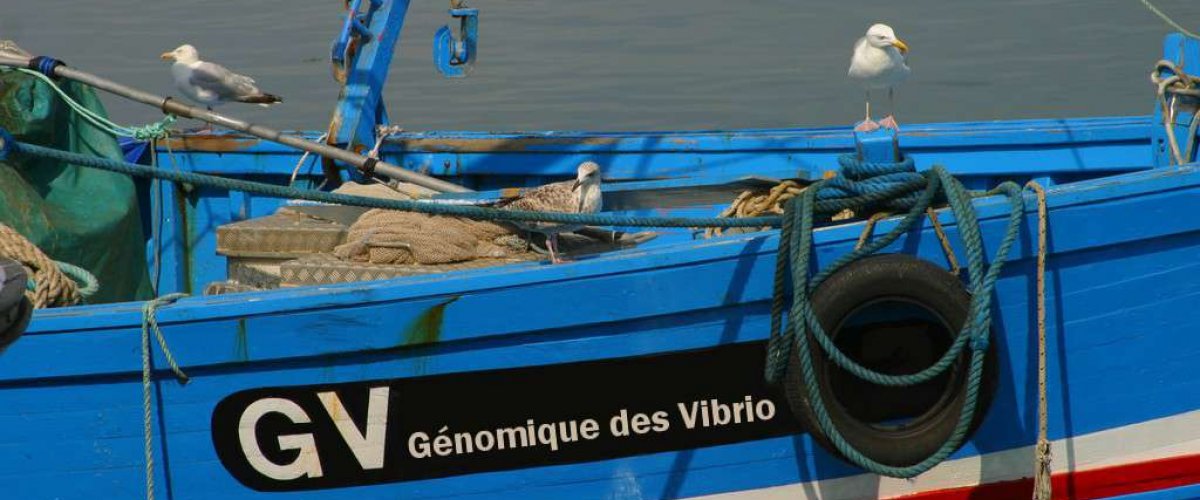


Presentation
Vibrios are bacteria responsible for a significant proportion of infections affecting marine invertebrates and represent the major cause of mortality in farmed marine species. They are able to colonize many habitats, exist in free-living planktonic seawater, adhered to surfaces within biofilms or associated with various marine hosts. This high adaptability is linked to their capacity to generate high-levels of genetic diversity, a significant proportion via lateral gene transfer (LGT).
The overall aim of our project is to investigate virulence as an emerging property of strains or population in vibrios infecting marine invertebrates. Virulence is viewed not only as the result of acquiring new genetic resources thanks to genomic plasticity but also and foremost through their interactions, be it at the level of the dialogue between genes, replicons or between strains within the population. To this aim, we use a combination of population, comparative and functional genomic approaches in addition to experimental pathology, cellular biology and biochemistry approaches. Our project is mainly based on two models: i) Vibrio nigripulchritudo, a shrimp pathogen, is a model to investigate the evolution of virulent lineages with emphasis on LGT; ii) diverse populations of vibrio, associated to oyster mortalities, are a model to investigate cooperation between strains in a polymicrobial disease.